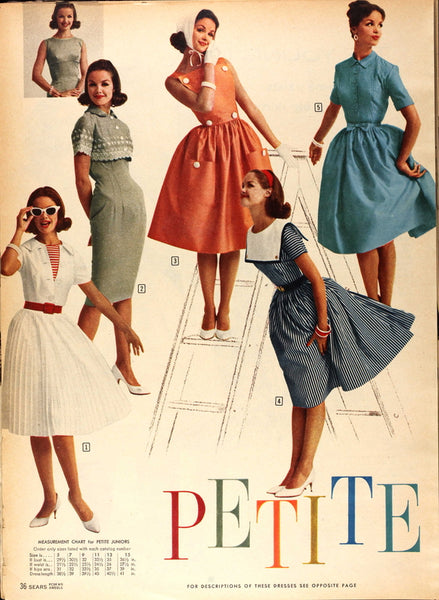Our journey began with this question when we discovered that standard sizing was designed to fit women of above average height.
According to population data, the average female height in Australia, North America and the UK is between 5'3" and 5'4" but almost all fashion brands design their clothes to fit a standard height of 5'5" to 5'6". This discrepancy of 2 to 3 inches makes a world of difference, as every petite woman will know.
In this blog, we start to unravel the answer by delving into the history of standard sizing.
A brief history of sizing
To understand where sizing standards come from, we have to go back more than 200 years. Prior to industrialisation, garments were made-to-measure at home or by local tailors in small workshops. By the turn of the 20th Century, technological advancements made it possible for ready-to-wear garments to be mass manufactured and sold in department stores at low prices. However, an accurate, universal sizing method needed to be established. The earliest sizing systems were based on a single chest measurement and while they worked quite well for men’s clothing, women’s bust sizes varied significantly.
In 1939, the US Department of Agriculture attempted to solve this problem by taking 59 specific body measurements of 15,000 women across the country. The researchers worked out that four key measurements were needed to determine garment size: stature, bust, waist and hip. Although the average height of the participants was 5'2", they decided that the standard height for garment construction should be 5'4". Based on this research, the National Bureau of Standards established the first set of commercial sizing standards in 1958, which were subsequently adopted in Australia and New Zealand.

Petite Juniors range in a 1950s Sears catalogue.
Early on, it was recognised that multiple sizing systems would be required. In addition to regular Women's sizing, the industry developed categories called Misses, Junior and Petite. Misses was for taller, slimmer figures from 5'5" to 5'9", while Junior was designed for younger, slightly shorter women with shorter torsos and higher busts. Petite referred to a shorter than average height, between 5'1" and 5'3". These categories were further divided into sub-categories such as Junior Petite, Misses Petite and Misses Tall.
While these systems resolved most of the sizing issues at the time, they could not keep up with the ever-changing female body in an increasingly diverse society. As bodies grew bigger, fashion companies began to label their sizes with smaller numbers in a practice called “vanity sizing,” which made standardised sizing obsolete. By the 1980s, the commercial standards were withdrawn by the US government altogether, and the Australian and New Zealand standards were eventually revoked.
The rise of fast fashion
When fast fashion took off in the 1990s, the industry moved towards a simpler sizing system that was more cost-effective to manufacture. Petite and Junior sizing had merged into what we know as the petite category today, and the lines between Misses and Women's sizing had blurred. As casual wear and sportswear became more popular, fashion became less form-fitting. Manufacturers began to add more stretch to their fabrics which meant they could get away with less precise sizing systems such as “one size fits all” and letter sizing (S, M, L).
A fashion catalogue from the 90s sells tracksuit pants with 3 different inseam lengths: regular, tall and petite.
Throughout the decades, private organisations have reinterpreted the 1939 study in order to establish new standards but it wasn’t until 2003 that a company called SizeUSA conducted a modern, population-wide study using 3D body scanning technology. They found that bodies were not only bigger but body proportions were also highly variable due to the growing popularity of cosmetic surgery. It was clear that a single, universal sizing system was not feasible.
To be continued…
The idea of multiple size categories is nothing new. As we've learned, petite sizing has existed since the 1950s. So why isn’t petite sizing more prevalent today? The answer to this question is perplexing. After the 2000s, petite sizing became more obscure. It's said that the 2000s were the pinnacle of fast fashion but it was really only the beginning.
In the next two blog posts, we’ll explore the puzzling “9 heads” figure, the convoluted business of fashion and how they influence sizing standards.


